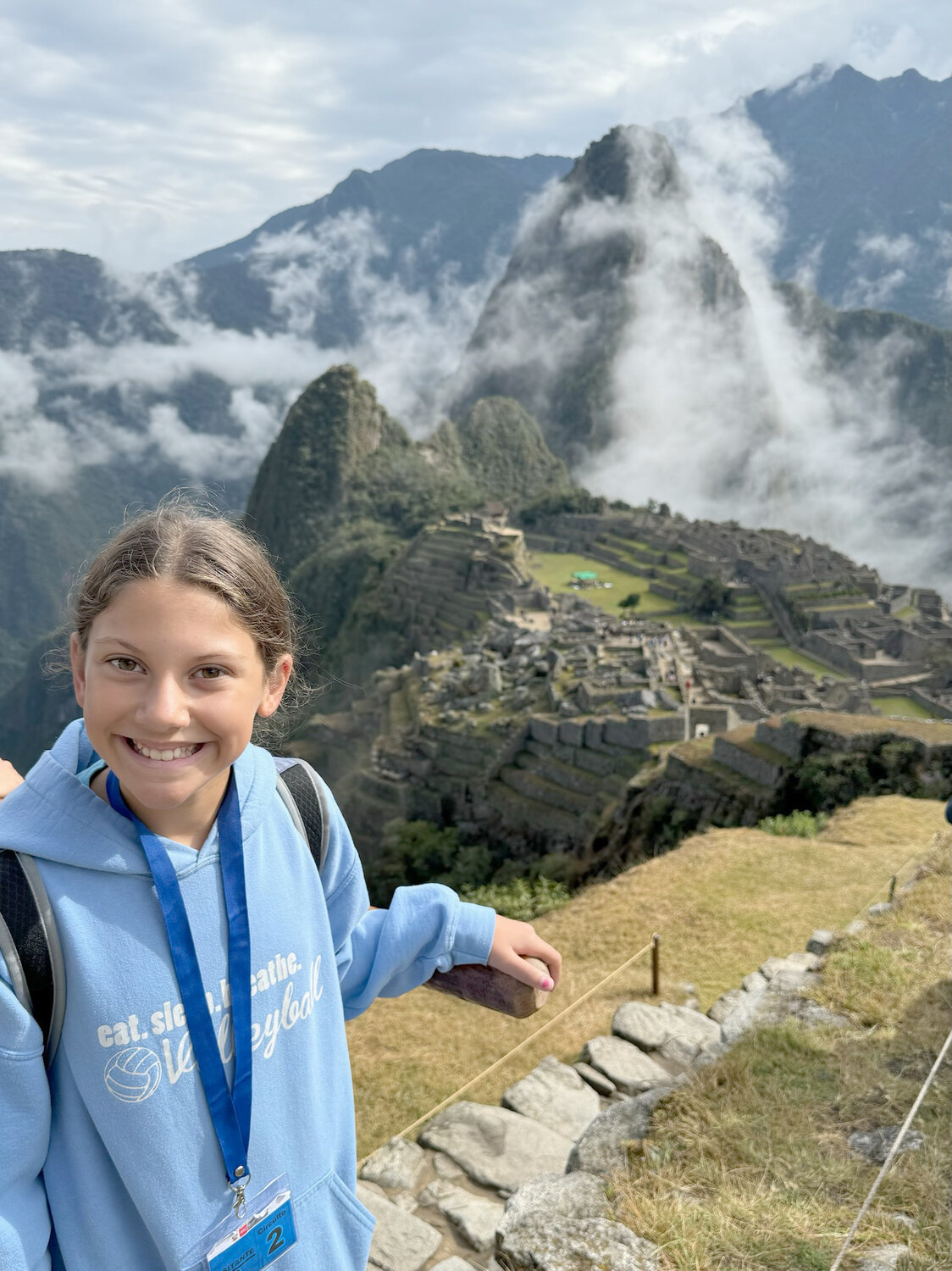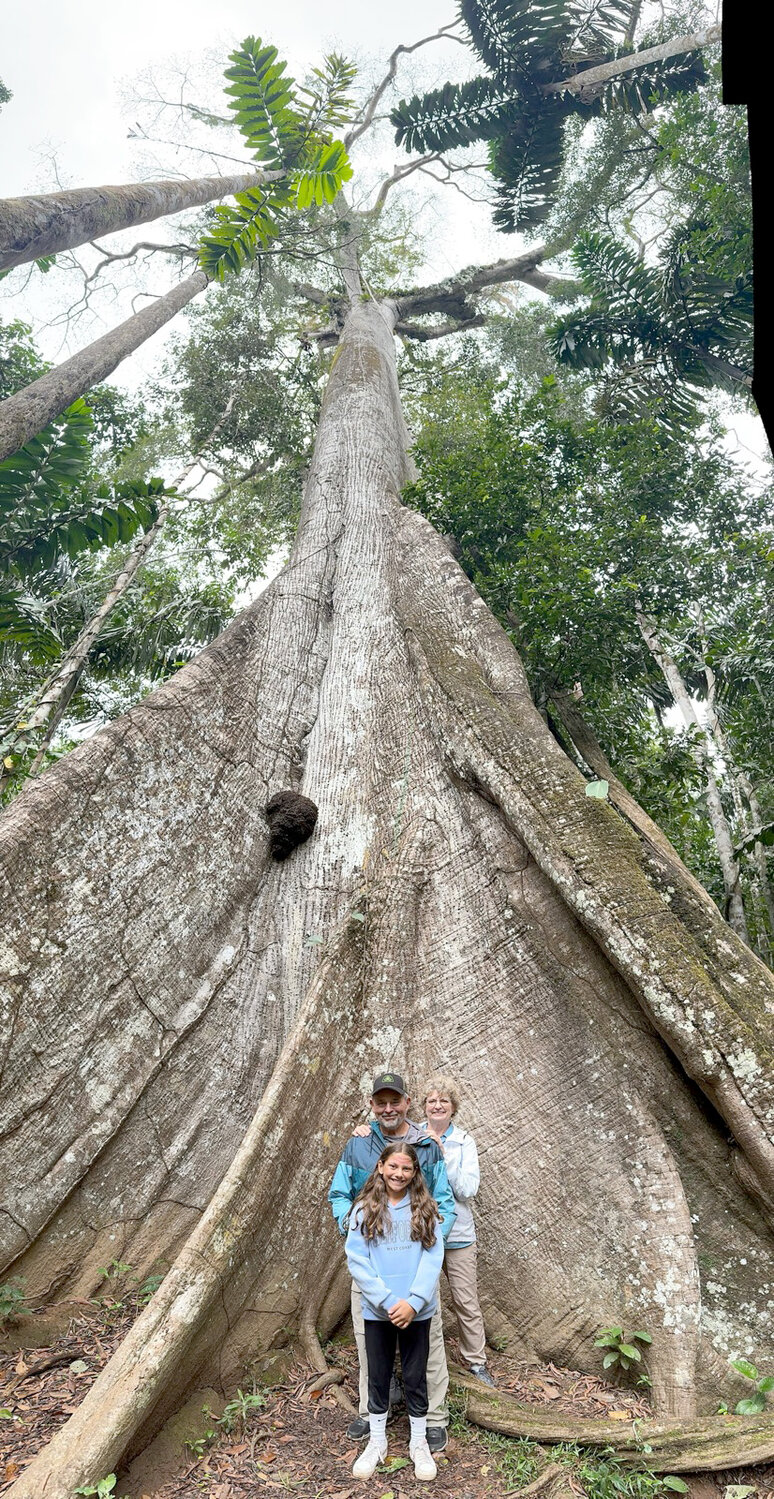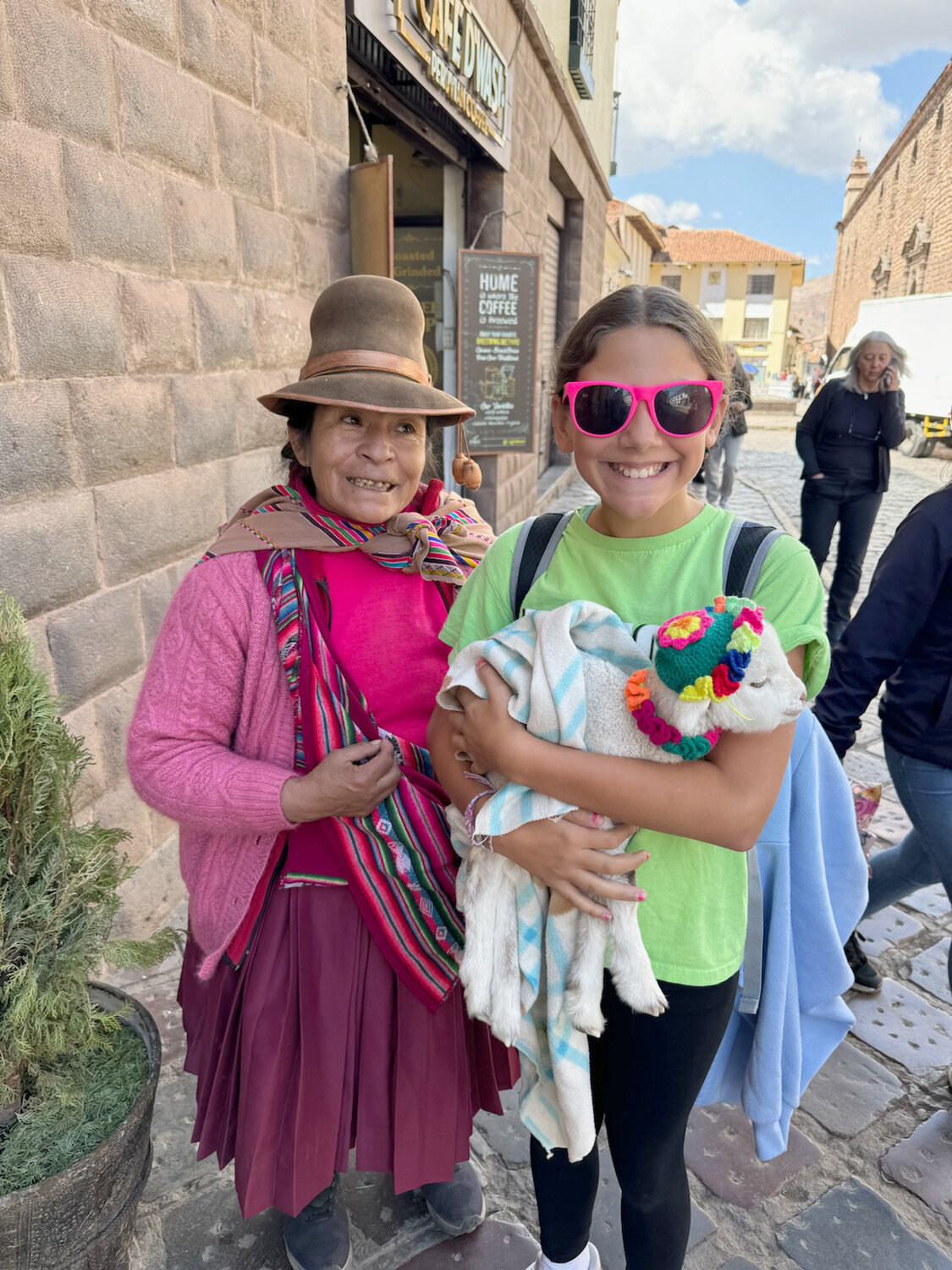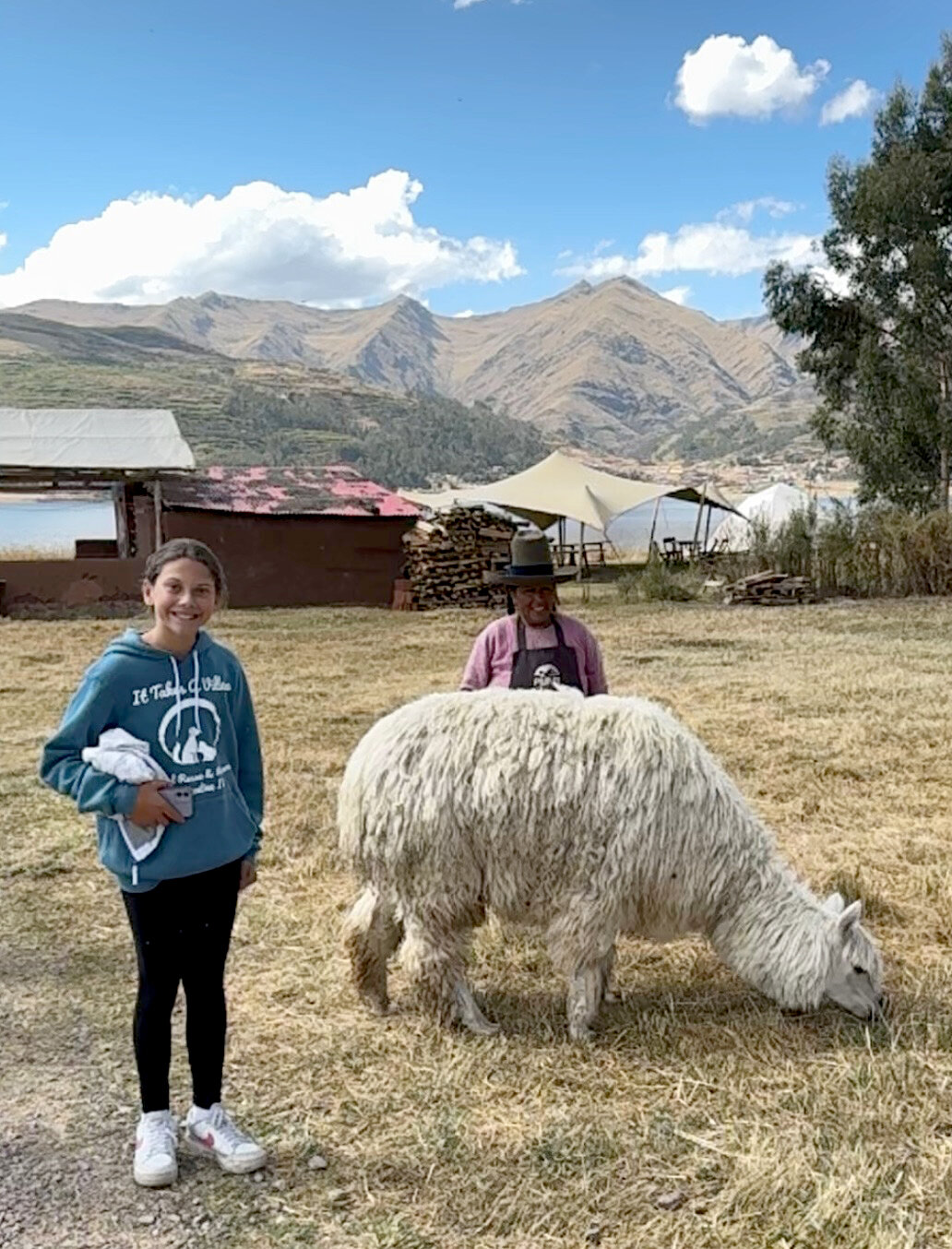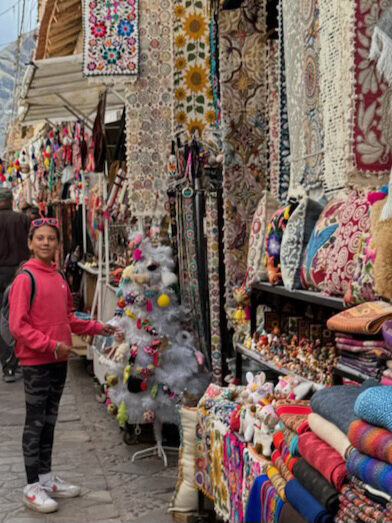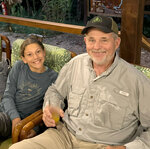Stella climbs to new adventures in Peru
From August 1-11, Wilton sixth-grader, Stella Yassin, along with her grandparents, Carol and Dave Duffe, traveled to Peru as part of National Geographic Family Journeys.
Stella wanted to see Peru because her mother, Jenny Yassin, had a great experience while there on a Globe Aware volunteer trip several years ago. However, Stella stated that she mostly chose Peru because “I wanted to see the llamas.”
The trio arrived in the capital city of Lima and took a stroll in the city park along the Pacific Ocean. The next morning, they took a flight to the city of Cusco, which is considered the gateway to Peru’s Inca heartland. While in the Sacred Valley of the Inca, they enjoyed observing the Women’s Weaving Cooperative in the Ccaccaccollo community, which uses traditional weaving and dying techniques to create garments. Through its proceeds, the community buys alpacas to provide a steady supply of wool, as well as looms, sewing machines, and training courses on production, sales, and small business management.
Carol and Dave said the visit to the cooperative was one of their highlights. Carol was surprised that “they use dried bugs, leaves, and salt to create their unique colors.” Dave was “impressed with seeing how the women make a living for the village.
Before she went on the trip, Stella created a list of 20 questions, and after her trip, all of them were answered. Among those questions were: “Will I see a llama” (yes, at the lake in Cusco)? “Can I see a guinea pig” (yes, at the women’s weaving cooperative)? “What kind of things do they make at the women’s weaving cooperative?” (hammocks and shawls)?
The three Wilton residents traveled by bus to explore the ruins of Machu Picchu, which is considered the “lost” city of the Inca, and voted one of the new Seven Wonders of the World in a worldwide internet poll. It was discovered in 1911 by Hiram Bingham, with the support of National Geographic.
Built for a specific Incan leader, the area was only active from 1420-1530. When he died, the people left. Thanks to the fact that the Spanish conquerors never found it, it wasn’t destroyed and remains virtually intact.
Dave was amazed “to think they had built it by hand with parts of the mountain.”
All three thought Machu Picchu was “awesome,” and Carol noted, “The mountains and view were just astonishing. We were in the clouds, even above the clouds.”
Dave was fascinated by the agricultural techniques that were used to grow terraced crops of corn and potatoes.
One very challenging aspect of visiting the area was the altitude. It is very high, with Machu Picchu Mountain standing at 10,111 feet. All three took altitude sickness pills because it was hard to breathe.
“Almost everything is a hill,” said Carol. “Even one flight of stairs could be exhausting!”
Peru isn’t just mountains, however. It is also a part of the Amazon rainforest. Their final destination was Tambopata National Reserve, an area known as a biodiversity hotspot. They stayed in a thatched roof and windowless jungle lodge with no electricity. Usually teeming with bugs, they were fortunate that a thunderstorm came through, and it turned cold. Because of this, Stella was glad to say, “I didn’t get one bug bite the whole trip!”
Visiting the Amazon rainforest was a definite highlight for Stella, especially with “all the cool animals.” They went on a walk through the jungle with a tour guide, and she got to see a monkey, a capybara, a macaw, a caiman, and a huge mother tarantula with two baby tarantulas.
They learned that the Incan language is called Quechua. It is not a written language, only a spoken language. It is not taught in school, which means it must be learned from grandparents and parents in order to be preserved. They also heard about the history of the Spanish conquest and how it affected the population. One example is that long braids, wide skirts, and bowler hats are an amalgamation of Spanish fashion adopted by Peruvian women.
When asked what personal insight they have discovered since their trip, each one had a unique answer.
“How good it was to be with Carol and Stella and watch their reactions and to share the moment,” said Dave.
Carol knew very little about Peru before going and learned, “It’s easy to take what we have for granted. Seeing things that are different than our world is just amazing. Now, I have a different perspective. I appreciate learning about other cultures and traditions. To visit in person makes it very real.”
Stella said, “I found out how different countries are. Now, I have answers to my 20 questions. I loved seeing all the animals. It was a cool place to visit!”
Some advice they would give to those who might visit Peru is to bring along altitude sickness pills, bug spray, long sleeves, long pants, binoculars, sunglasses, and be prepared to dress in layers. Don’t bring scented items, as they attract bugs. The best time to travel is in August, which is the dry season. Finally, travel with tours or guides that can translate the language and know where to go and what to eat.
Comments

